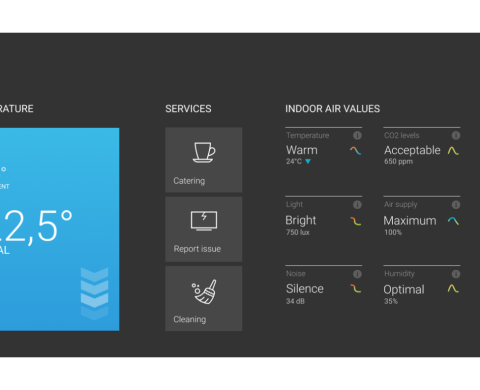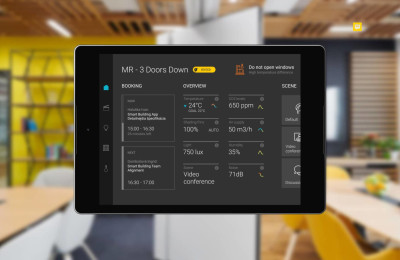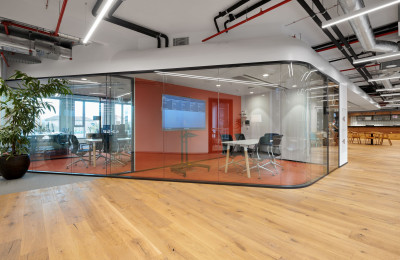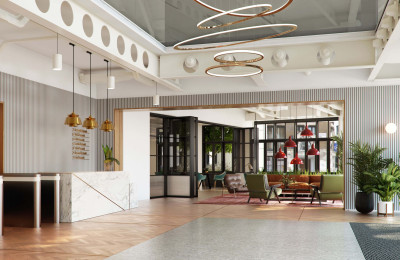Post Covid-19, office air purity has never been more important
Air is the key substance of healthy offices. Yet, it can get polluted easily, resulting in an adverse impact on your health and productivity. What air qualities should be monitored and evaluated?
Air is here, and also there. Everywhere. Any time. Any place. Any state. It’s always present. We navigate through the invisible essence that embodies its blurred and insubstantial character in smells or humidity, but mostly it ‘s either a reliable carrier or a strict guard stopping bacteria and viruses from spreading.
Monitoring, evaluating and changing the settings of workspace air in real-time with smart building technologies, such as our Symbiosy, can transform buildings into one of the precautions against contamination. Proper ventilation, filtration and humidity can become an effective aid in the reduction of pathogen spread.
First things first, let’s start with the basics.

What causes SBS and indoor air pollution?
Indoor air is a different chapter to outdoor air, with a whole set of factors bringing air purity down. To name just a few: building materials, indoor combustion sources, water leaks, and surfaces that can stockpile airborne germs. Combined with poor ventilation practices failing to identify these sources, we end up exposed to volatile organic compounds (VOCs – e.g.: paint emissions, surface cleaners or disinfectants), polycyclic aromatic hydrocarbons (PAHs) and microbes. Doesn’t sound very tempting!
All of these contaminants contribute to a range of negative health outcomes such as asthma, allergies and other upper respiratory illnesses. The reactions depend on contaminant concentration, intake and exposure duration. (WELL Building Standard, 2020)
Sometimes, it can escalate from individual perception of discomfort to something collective – Sick Building Syndrome (SBS). In such buildings there is no apparent cause yet spending time there leads to eye and skin irritation or headaches in many people. (WELL Building Standard, 2020)
How to combat poor air quality
The good news is: There is a solution. Or rather, a bunch of them. High-quality indoor air can be achieved with proper ventilation and air filtration:
Ventilation systems with high-quality filters have to be regularly checked and there are restrictions on maximum CO² levels. Ultraviolet lamps should be used to reduce mould or quarterly mould prevention check-ups. A building air flush is performed while maintaining an indoor temperature of at least 15 °C and relative humidity below 60%…. (WELL Building Standard, 2020)
These are just a few examples of a full list of 30 features to be followed from WELL Building Standard* that play a crucial role in the quality of air. For the full list head to their website.
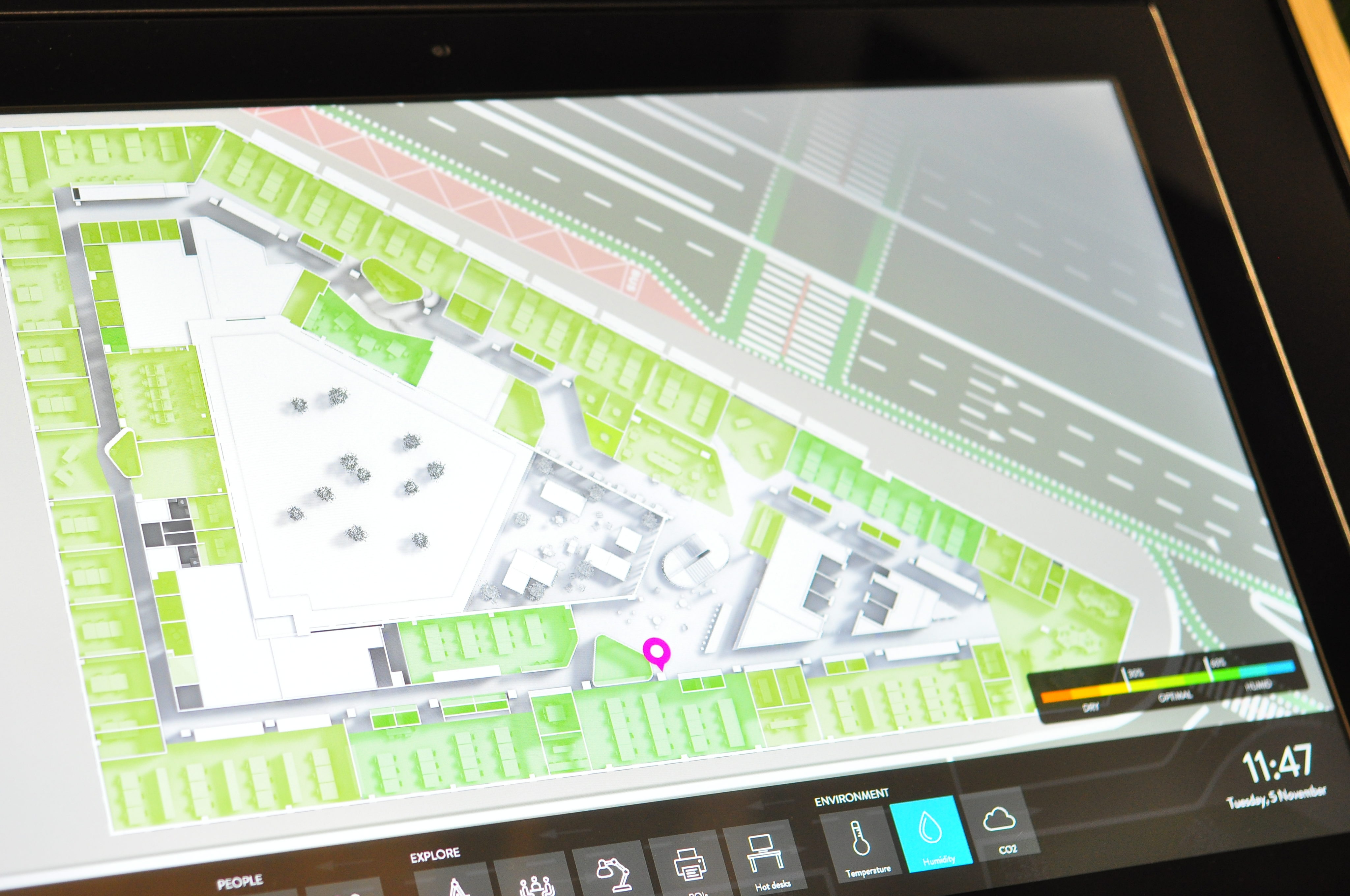
Dry air – body implications
Humidity, undoubtedly, is one of the key air factors to measure and optimise. Why? Correctly set humidity levels can prevent body irritations and the spread of bacteria.
Humidity acts like a sponge: low humidity with dry air draws moisture from any source it comes into contact with, including our bodies. This surface dehydration can cause initial discomfort, from sore eyes or contact lens irritation to itchy skin and even dermatitis.
The problem goes even further, namely to the respiratory and immune systems. Breathing air below 40% RH (relative humidity) dries our nose membranes, throat and the bronchi that are in charge of the body’s defence against viruses and bacteria. And those enjoy a fast spread and prolonged infectivity on waves of low air humidity.
The study “Higher indoor humidity inactivates flu virus particles” reveals that “maintaining indoor RH at levels greater than 40% can significantly reduce the infectious capacity of the aerosolized flu virus.” They found that:
An hour after being released in a room at a relative humidity of 23% or less, 70-77% of viral particles retained their infectious capacity, but when humidity was increased to about 43%, only 14% of the virus particles were capable of infecting cells.
The optimal humidity to minimise risks to human health from biological contaminants, pathogens and chemical interactions occurs in the narrow range between 40-60% relative humidity at normal room temperatures. (Humidification and Evaporative Cooling, Condair, 2016)
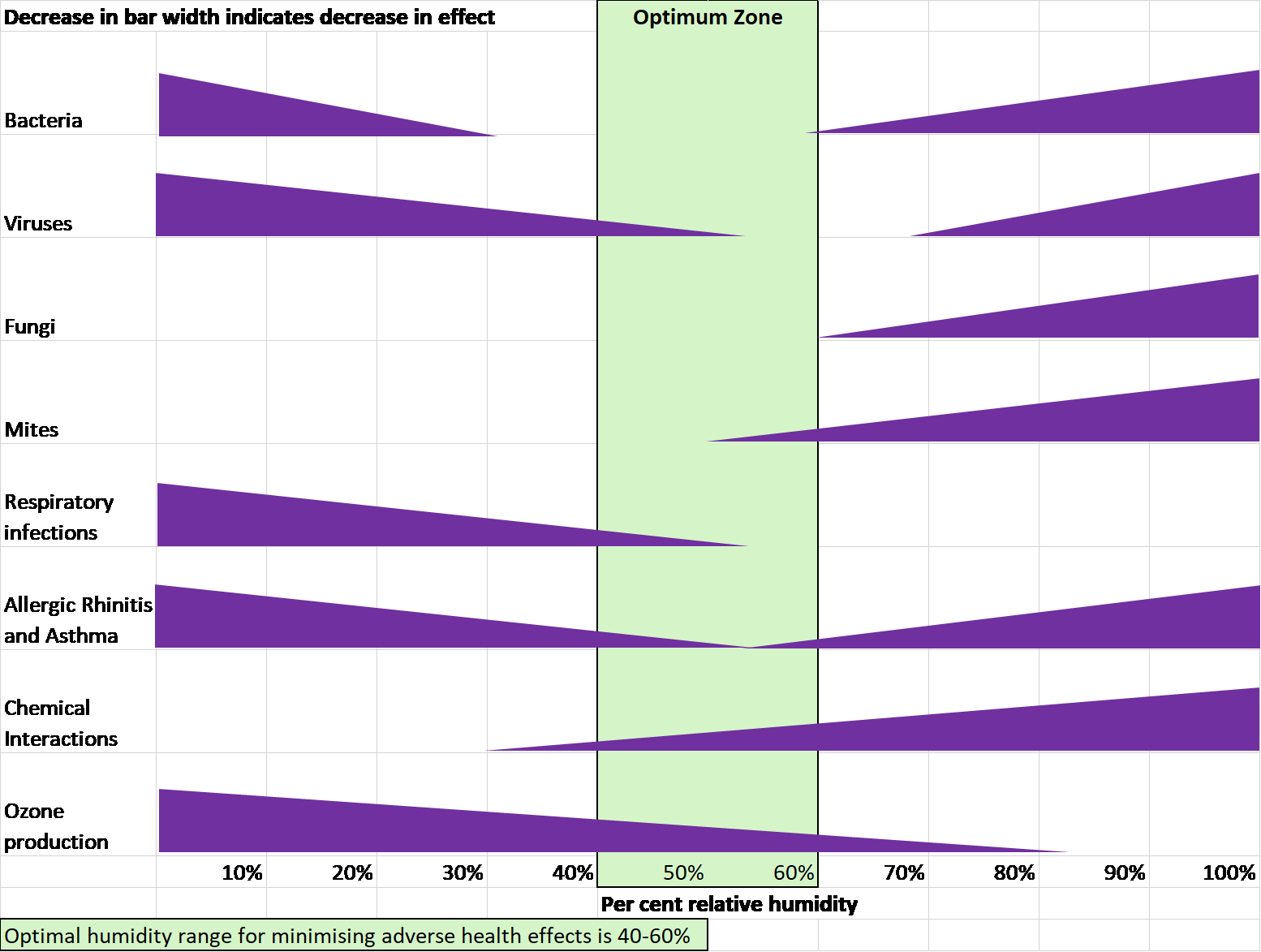
What else can be done to ensure healthy workspaces and minimise bacteria spread? Check WELL Features or some of our tips below:
- Assigned seats to avoid worrying about cleanliness and time spent
- The greater distance among employees and partitions within the workspace
- Enhanced cleaning protocols – increased frequency, a stricter approach to high-touch surfaces, use of UV-lamps for cleaning and disinfecting
- Increased hygiene measurements – e.g. providing hands-free dispensers with a sanitiser, disposable tissues, no-touch garbage bins..

In the coming decade, the focus on occupant health and productivity through workplace design and operations will continue to gain momentum. These emerging trends will positively influence the adoption of focused green building certification systems like WELL. We at HB Reavis are one of the pioneers of WELL certification in Europe. Our products, such as Symbiosy, embrace its principles across categories when creating its methods and technologies for healthier and more productive workspaces.
______________
*WELL Building Standard positions building design and operations as agents of public health. It measures, verifies and monitors building features that impact health, wellbeing and productivity. Their aim is to transform buildings and communities to help people thrive there. WELL certified buildings bring health-focused workspaces that increase productivity and happiness at work.
